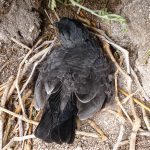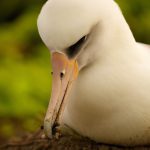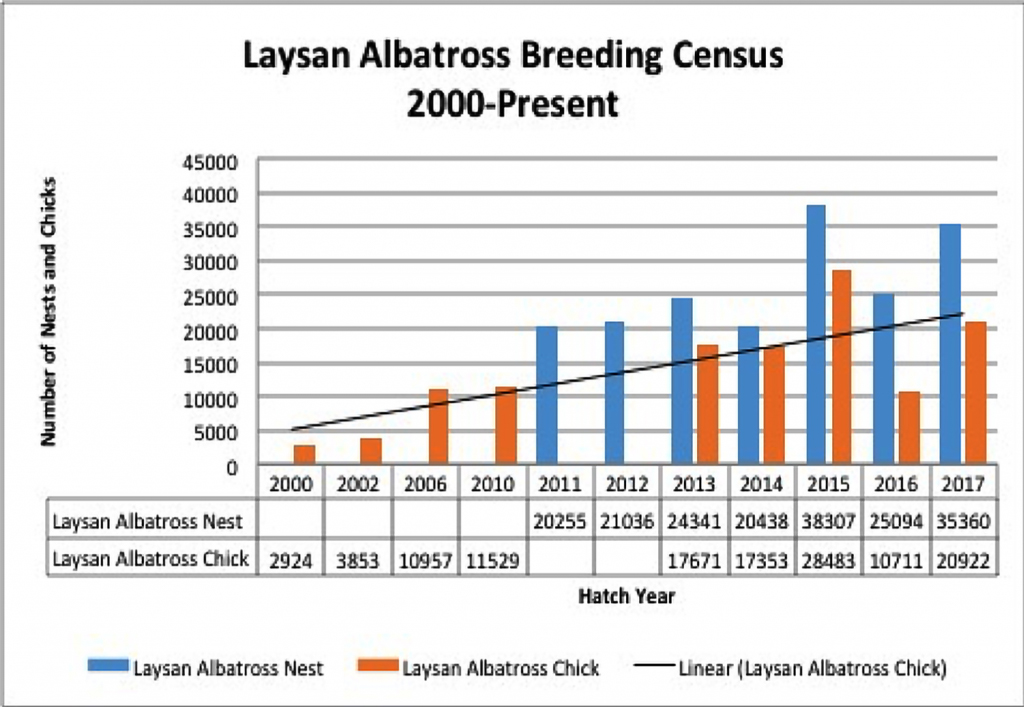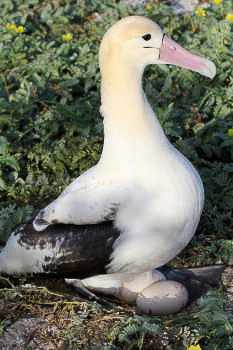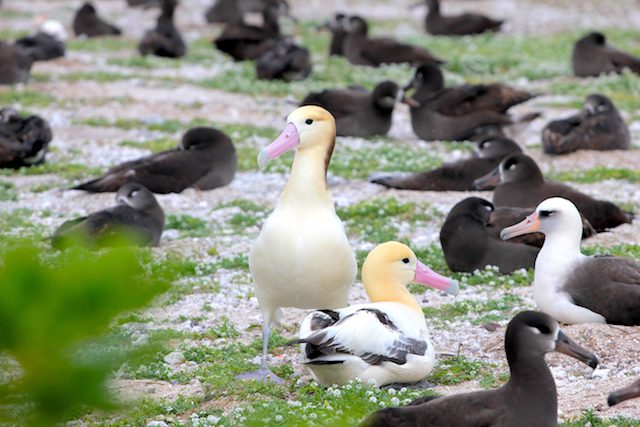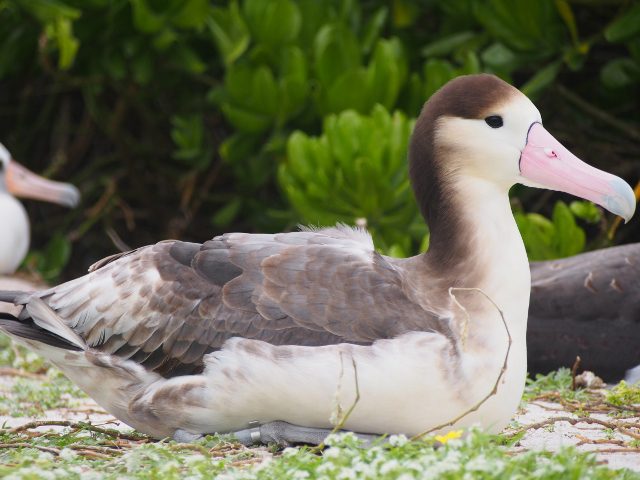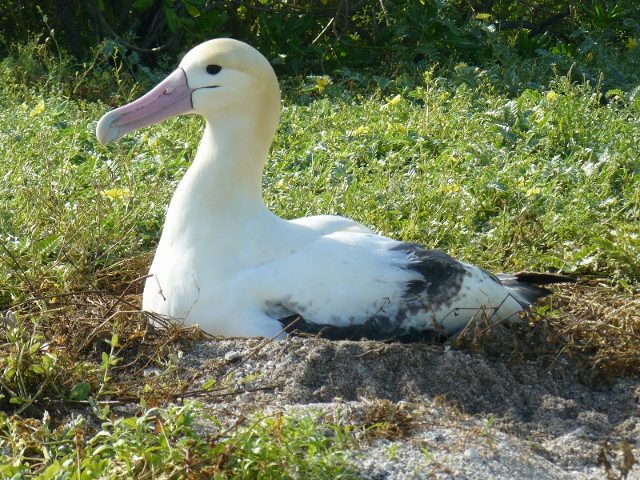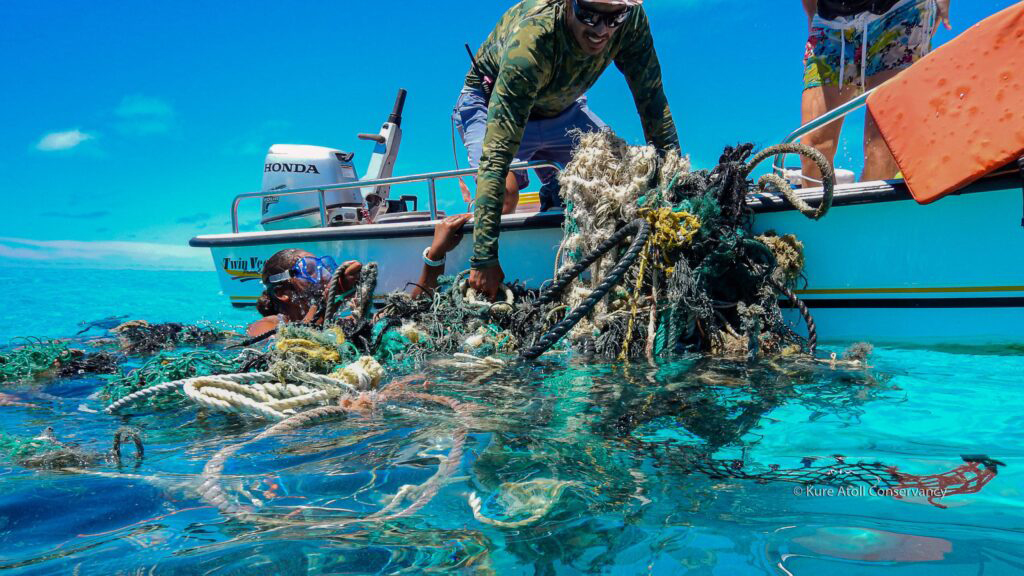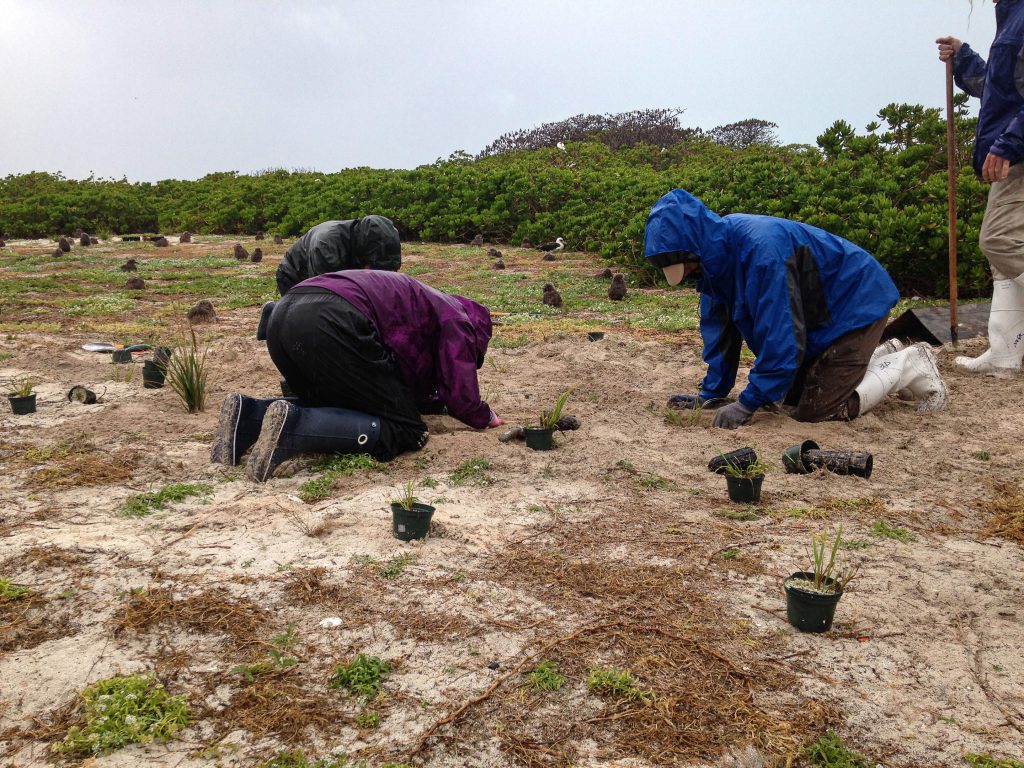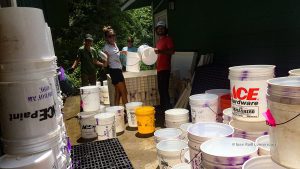The federally listed endangered Laysan duck (Anas laysanensis) is restricted to less than 1100 ha in the North Western Hawaiian Islands (NWHI, with populations primarily on Laysan and Midway Atolls, mean elevations < 3 m above sea level). Once widely distributed across the Hawaiian archipelago, today a global population of approximately 400-500 potentially breeding pairs persists.
Green Island is 90 ha with a maximum elevation of 7.3 m and a mean elevation of 2.8 (SD 2.0) and lies within the presumed pre-historic range of Anas laysanensis (Laysan teal). While there may have been freshwater seeps historically, there are none today. However, because fresh water seaps are important habitat to the duck’s survivability, two small groundwater seeps (< 0.1 ha) were created along with six freshwater seeps installed as well.
As recommended by the species recovery plan (US Fish and Wildlife Service, USFWS 2009) and subsequent structured decision-making workshops (National Conservation Training Center, NCTC 2010), we reintroduced wild Laysan ducks to Kure Atoll in 2014 for an additional ‘insurance’ population to reduce extinction risks to the species. When future catastrophes strike, such as sudden flooding from sea level rise, tsunamis, hurricanes, disease outbreaks, or accidental predator introductions, these disasters are unlikely to hit each island population simultaneously, or with the same magnitude, thus each island population serves as insurance for the species. Species extinction risks are dramatically reduced by restoring additional island populations and ultimately, Laysan ducks could be reintroduced to less vulnerable higher elevation islands in the future (USFWS 2009). Because locations on higher islands are not yet available that are free from predators or hybridization threats, recovery efforts focused on increasing the number of populations in the NWHI have remained a priority.


